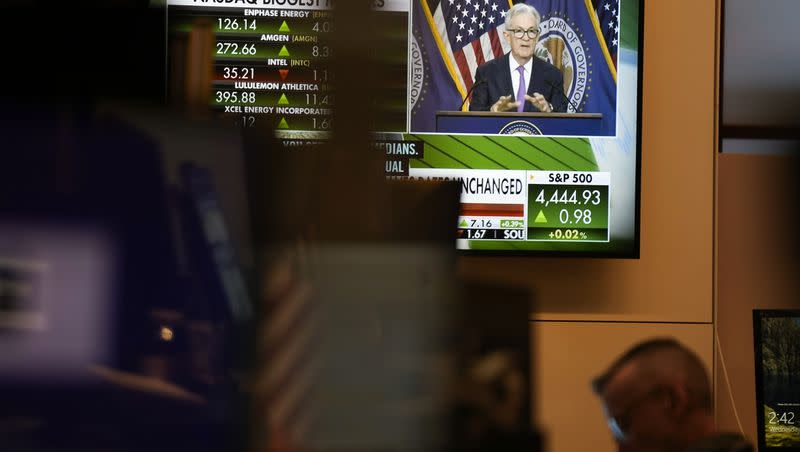Fed pauses rates at 22-year high but another hike is likely in store this year

- Oops!Something went wrong.Please try again later.
The Federal Reserve announced its decision to pause on adjusting its benchmark interest rate on Wednesday, leaving rates at a 22-year high and also signaling one more hike could be levied before the end of the year.
The last Fed pause in June was followed by a .25% increase in July to its interbank overnight lending rate, which brought the rate window to 5.25%-5.5%, the highest since 2001. The monetary body has assessed 11 hikes since the rate hovered near zero in March 2022 in its fight to quell inflation, which has been mostly inching down since hitting 9.1% in June 2022.
Interest rate adjustments are the Fed’s primary weapon in an ongoing battle against the elevated prices of consumer goods and services, and the policy changes over the last 18 months represent the monetary body’s most aggressive series of increases in decades.
Related
Inflation signals mixed as gas hikes help drive August jump in consumer prices to 3.7%
Pump prices hit 2023 high as a barrel of crude marches toward $100
The rate hikes aim to raise the cost of debt for businesses and consumers, which should, theoretically, reduce the amount of spending and overall economic activity, a shift in dynamics that typically brings inflation rates down.
U.S. annual inflation rose from 3.2% in July to 3.7% in August, but core inflation eased as long-running price increases showed signs of continued slowing, according to the latest Labor Department report released earlier this month.
At a press conference following the conclusion of the Fed’s September meeting, which included a unanimous vote by the body’s Federal Open Market Committee to leave its benchmark rate at the current level, Federal Reserve Chairman Jerome Powell signaled that one more rate hike before the end of 2023 could be in store and any rate reductions next year would be nominal.
The Fed has a stated goal of achieving and maintaining a 2% annual inflation rate that supports its dual mandate of maintaining price stability and maximum employment.
While Powell said the “process of getting inflation sustainably down to 2% has a long way to go,” he also indicated the end of upward interest rate adjustments was in sight.
“We’re fairly close, we think, to where we need to get,” Powell said. “A place where we’re confident of a stance to bring inflation down to 2%.”
While an end to upward rate adjustments may be nearing, the Fed also shared projections indicating its rates would be around 5.1% at the end of 2024, reflecting any downtick next year would be relatively small.
August’s Consumer Price Index Summary found overall prices on consumer goods and services rose 0.6% from July to August, the biggest month-over-month increase in more than a year. Core inflation, a measure that strips out volatile food and energy prices, rose .3% from July to August but the year-over-year rate of 4.3% for August was down from July’s 4.7%.
The report found gasoline price hikes were the primary driver of the rate jump from July to August.
Earlier this week, the average price of gas hit $3.88 per gallon, the highest so far in 2023. Production cuts by a group of petroleum producing nations have offset gas price reductions that typically occur at the end of the summer vacation season.

